Search
Search Results
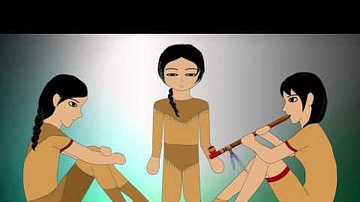
Video
Traditional Tobacco Use
This video was created in collaboration with the AHS Tobacco Reduction Program and the Indigenous Health Program. It outlines the differences between traditional tobacco use in Alberta’s Indigenous cultures and the misuse of commercial tobacco...
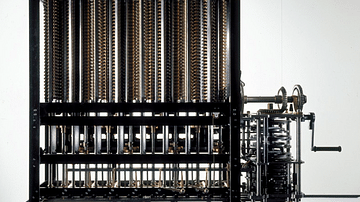
Image
Difference Engine
The Difference Engine was invented by the Englishman Charles Babbage (1791-1871) in 1822. This example is a modern model of Babbage's Mark II, designed c. 1848. Like most other inventions of the Industrial Revolution, Babbage built on the...
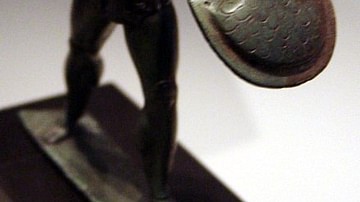
Article
Agoge, the Spartan Education Program
The agoge was the ancient Spartan education program, which trained male youths in the art of war. The word means "raising" in the sense of raising livestock from youth toward a specific purpose. The program was first instituted by the lawgiver...
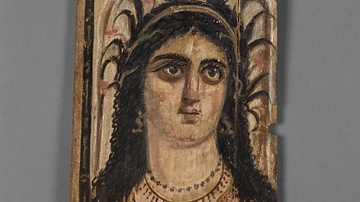
Image
Isis, Roman-Egyptian Panel
This 2nd Century CE tempera painting on wood panel depicts the Hellenized form of the Egyptian goddess Isis. In the Ptolemaic and Roman periods, Eastern deities and cultic practices became increasingly widespread and attracted devotees...
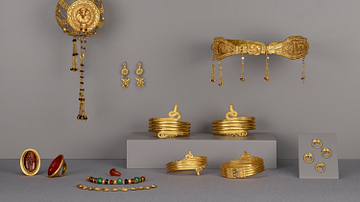
Image
Collection of Ptolemaic Jewellery
This opulent collection of Ptolemaic jewellery from Egypt probably belonged to a wealthy woman and was made between 225–175 BCE. The various pieces were made out of gold and are inlaid with a variety of precious stones. The collection...
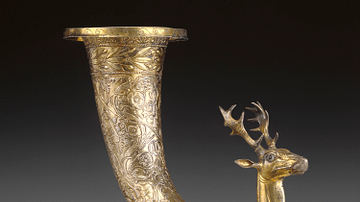
Image
Stag Rhyton
This exquisite gilded silver rhyton (wine drinking horn) terminates in the forepart of a naturalistically rendered stag. Incorporating stylistic elements of Achaemenid and Seleucid traditions, it was made in Parthia (northwestern Iran, ca...
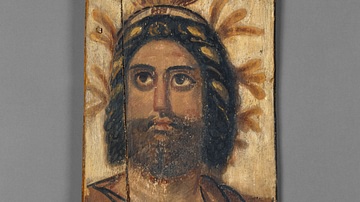
Image
Romano-Egyptian Painting of Serapis
A painting of the Graeco-Egyptian god Serapis, wearing his characteristic grain-counter (modius) on his head. Made in Roman Egypt, c. 100-200 CE. Tempera painting on wood panel. 39.1 × 19.1 cm (15 3/8 × 7 1/2 in). The panel is a part of the...
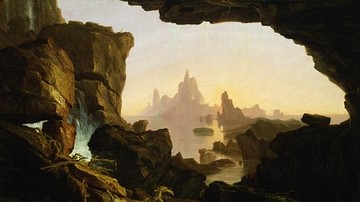
Image
The Subsiding of the Waters of the Deluge
Thomas Cole, The Subsiding of the Waters of the Deluge, 1829 CE, oil on canvas, Smithsonian American Art Museum, Gift of Mrs. Katie Dean in memory of Minnibel S. and James Wallace Dean and museum purchase through the Smithsonian Institution...
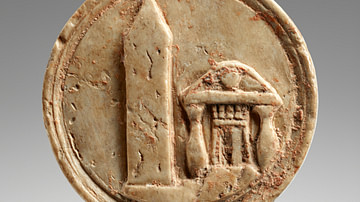
Image
Ivory Token Depicting Egyptian Obelisk and Temple
This 1st Century CE ivory token depicts an Egyptian-style obelisk and temple, probably located in the Alexandrian suburb of Nikopolis. The token was probably produced in Roman Egypt and is now part of the collection of the J. Paul Getty Museum...
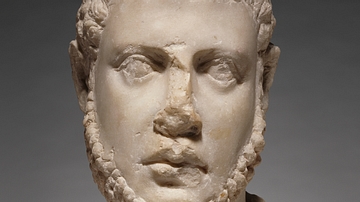
Image
Bearded Head of Ptolemaic Dynast
This roughly worked and approximately life-size marble portrait depicts a member of the Ptolemaic dynasty. The portrait was carved in Alexandria, Egypt, sometime during the 2nd Century BCE and is now part of the collection of the J. Paul...